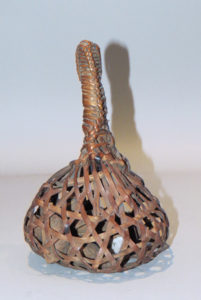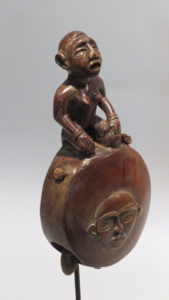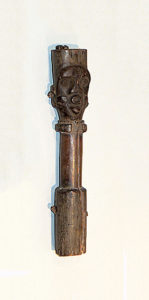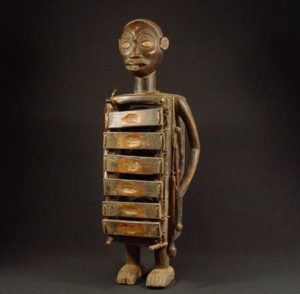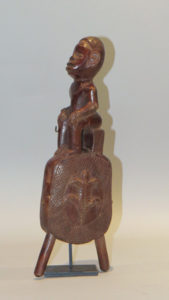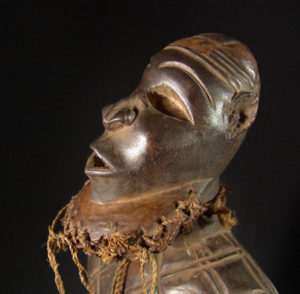The Bakongo or Kongo people are a Bantu ethnic group who speak the Kikongo language. These people are a matriarchal society and are the largest tribe in DRC (Democratic Republic of Congo).
The Bakongo people were among the first to welcome trade when the Portuguese arrived in the 1400’s. Christianity was also imported at that time into the Bakongo belief system, when missionaries twisted the Bakongo language to teach their religion. Words such as “nkisi” to mean “holy” is an example. Today there is mixture of traditional religion and Christianity, as both churches and shrines continue to be maintained.
Most art work by the Bakongo is spiritually driven often using sacred medicines, referred to as nkisi (loosely translated to spirit), for divine protection. The Bakongo legend tells a story about the great god, Ne Kongo, who came down from heaven bringing the first nkisi. Nkisi are represented as a container filled with sacred material that is triggered by supernatural forces which can be summoned into the physical world. Nkisi can be as simple as pottery or as complex as wooden figures imbued with sacred elements. Nkisi can be evil or enlightened.
Source:
Baquart, Jean-Baptiste. The Tribal Arts of Africa. New York: Thames and Hudson Inc.

